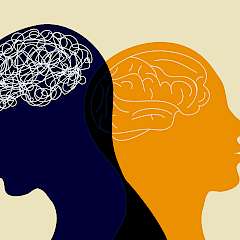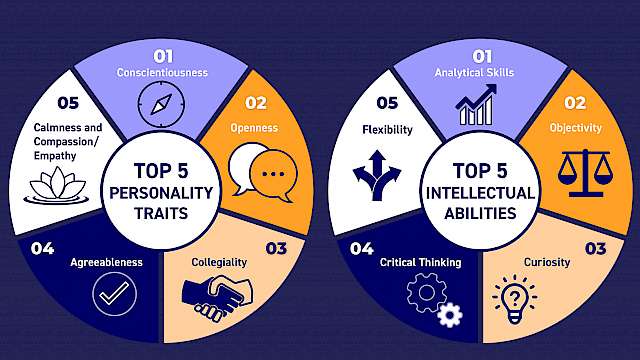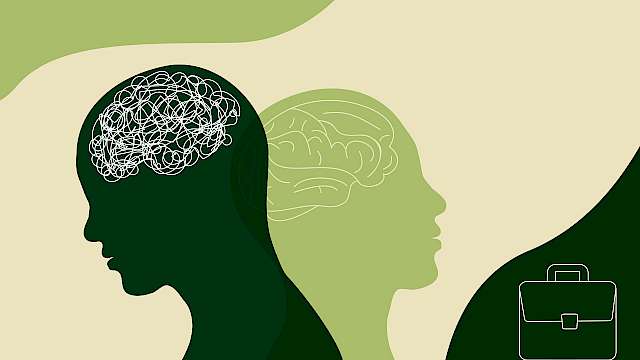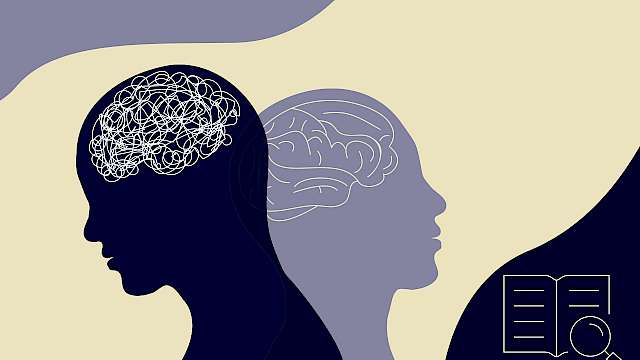Background
Existing research does not indicate that neurodivergence (e.g., autism and ADHD) causes extremism engagement in the general population. However, while estimates vary, a proportion of individuals within extremist populations are neurodivergent. These individuals may follow a different pathway to engagement and have different needs than their neurotypical counterparts.
Through three studies, we examined how neurodivergent traits and symptoms (with a focus on autism and ADHD) may contextualise vulnerability to extremism engagement, as well as resilience and disengagement. These studies included:
- A systematic literature review
- Ten focus groups with practitioners working directly with neurodivergent individuals in extremism contexts
- A case study analysis of 18 close sourced international cases formulated by practitioners
Here, we summarise the key findings from our research and considerations for practice.
1. Restricted Interests
Neurodivergent extremists may develop specific intense interests that draw them into and keep them engaged in extremism. While these intense interests may serve psychological functions for the individual (e.g., alleviating stress), they may become associated with harmful subjects, including terrorism. According to our research, harmful interests may arise from precursors such as military history, especially the Second World War; mass murder and violence; weapons (firearms, knives, and bombs); computers and technology; extremist narratives or ideologies; conspiracy theories; and politics. Technical and weapon-related interests may confer criminal capability (e.g., bomb-making), while multiple interests may converge to shape risk.
2. Vivid Fantasy and Ideation
At-risk neurodivergent individuals may experience vivid extremism-related fantasies and ideation. In our research, this included detailed visual fantasies depicting violent ideation or preoccupations with death – usually inspired by existing violent imagery viewed online. Violent ideation may be associated with intense interests, and often appeared to redress feelings of anger, distress, and injustice. These fantasies can extend to idealised versions of themselves, contributing to a grandiose narrative surrounding them and their actions. In some cases, particularly where individuals become desensitised to violent imagery, they may transition from fantasy to action.
3. Obsessionality, Repetition, and Collecting
Interests may become obsessive and include the collection of associated items, images, or videos. In our research, this included collections of weapons, Nazi memorabilia, and virtual content such as memes, propaganda, and violent videos. These collections may provide opportunities for detection, or in extreme cases, grounds for conviction. As well as obsessively pursuing their interests, at-risk individuals may demonstrate a fixation, preoccupation and repetitive thinking and communication linked to specific grievances or feelings of injustice.
4. Social Interaction and Communication Difficulties
Social and relationship difficulties experienced by neurodivergent individuals may lead to isolation, feelings of resentment, and personal grievance. This may, in combination with other factors, fuel revenge fantasies and identification with extreme ideologies that offer an explanation or social status. Social difficulties may push individuals to retreat into online communities, where they can communicate about their interests and may feel more competent and connected, but may be exposed to more extreme content and actors. A lack of social awareness may also lead individuals to ‘leak’ their extreme views, resulting in referrals to authorities.
Neurodivergent cognitive styles can be seen both as strengths and potential difficulties.
5. Need for Order, Rules, Routines, and Predictability
Autistic individuals may have a need for predictability, order, structure, rules, and routines. Changes to routines or perceived loss of order can be associated with stress and frustration that may contribute to grievances. ‘Rule-based’ ideologies that claim to restore order may be attractive to at-risk individuals.
6. Cognitive Styles (Strengths and Difficulties)
Neurodivergent cognitive styles can be seen both as strengths and potential difficulties. There may be a tendency to overfocus on minute details (of an interest, or a fixation on a grievance) while overlooking the bigger picture and context. This could lead to a lack of consideration of the consequences of their actions. Information that is presented in the form of facts, categories, fine details, and patterns, may resonate and have a pull. Difficulties in organisation, planning, and prioritisation may exacerbate professional and academic challenges faced by individuals that may contribute to grievances. Impulsivity may be linked to impulsive risk-taking behaviour and violence.
7. Sensory Needs and Sensation-Seeking
Over-sensitivity to sensory input may contribute to difficulties in school or work and subsequent isolation, and may drive some individuals to self-soothe through risky interests and online spaces. It may also lead to a perception of the world as threatening.
Meanwhile, under-sensitivity may be expressed through sensory-seeking behaviours, including interests in violent video games, fire, explosions, weaponry, and shooting. Elaborate stimuli may have a strong pull. Individuals may experience desensitisation from repeated exposure, leading them to seek more extreme content and engage in riskier behaviour.
8.Complex Needs and Comorbidities
Additional factors often interact with or exacerbate difficulties associated with neurodivergent symptoms, creating complex and interacting needs. In our research, this included other diagnoses (e.g., other neurodivergence, schizophrenia, depression, and anxiety), trauma (e.g., experiences of abuse), and other life stressors (e.g., familial, relationship, and employment difficulties). These can be exacerbated by a lack of support services and transition periods, such as the transition to adulthood. Such difficulties can drive individuals to self-soothe through their risky interests and behaviours.
Conclusions: Enhancing Resilience and Considerations for Practice
Overall, our findings suggest that some neurodivergent features can contextualise extremism vulnerability and risk, but rather than directly causing this risk, they can become a context for push and pull factors linked to extremism and combine with or exacerbate other vulnerabilities. Within populations of concern, risk assessment approaches and interventions may benefit from considering how specific neurodivergent traits and symptoms can contextualise risk, vulnerability, and resilience, and their interaction with other factors.
Practitioners may benefit from:
- Adopting tailored neurodivergent-friendly approaches
- Harnessing protective factors, including leveraging strengths conferred by neurodivergent features
- Considering wider environmental and systemic factors such as school, mental healthcare, and social support
- More in-depth and practical training to guide them through understanding neurodivergent needs and the complex implications they may have for assessment and interventions.
Read more
Salman, N. L., Al-Attar, Z. (2023). A Systematic Review of Neurodivergence, Vulnerability, and Risk in the Context of Violent Extremism. https://crestresearch.ac.uk/resources/a-systematic-review-of-neurodivergence-vulnerability-and-risk-in-the-context-of-violent-extremism/
Salman, N. L., Al-Attar, Z., Mckenzie, G. (2023). Practitioner Perspectives on Counterterrorism and Neurodiversity. https://crestresearch.ac.uk/resources/practitioner-perspectives-on-counterterrorism-and-neurodiversity/
Salman, N. L., Al-Attar, Z., Pyszora, N., Smith, D., Iqbal, M. (2023). Neurodivergence and Violent Extremism: 18 International Case Studies. https://crestresearch.ac.uk/resources/neurodivergence-and-violent-extremism-case-studies/
See Also
Al-Attar, Z. (2018). Interviewing Terrorism Suspects and Offenders with an Autism Spectrum Disorder. The International Journal of Forensic Mental Health, 17(4), 321–337. https://doi.org/10.1080/14999013.2018.1519614
Al-Attar, Z. (2019). Extremism, radicalisation & mental health: Handbook for practitioners. Radicalisation Awareness Network: Health & Social Care Subgroup, European Commission. https://home-affairs.ec.europa.eu/pages/page/ran-hsc-handbook-extremism-radicalisation-mental-health-handbook-practitioners-november-2019_en
Al-Attar, Z. (2020). Autism spectrum disorders and terrorism: How different features of autism can contextualise vulnerability and resilience. Journal of Forensic Psychiatry and Psychology, 31(6), 926–949. https://doi.org/10.1080/14789949.2020.1812695
Worthington, R., Al-Attar, Z., Lewis, A., & Pyszora, N. (2021). Rapid Evidence Assessment (REA) on Neurodiversity and Violent Extremism. AVERT. https://www.avert.net.au/s/Rapid-Evidence-Assessment-on-Neurodiversity-and-Violent-Extremism.pdf
Copyright Information
As part of CREST’s commitment to open access research, this text is available under a Creative Commons BY-NC-SA 4.0 licence. Please refer to our Copyright page for full details.
IMAGE CREDITS: Copyright ©2024 R. Stevens / CREST (CC BY-SA 4.0)








